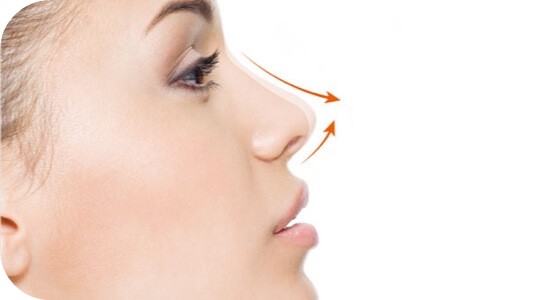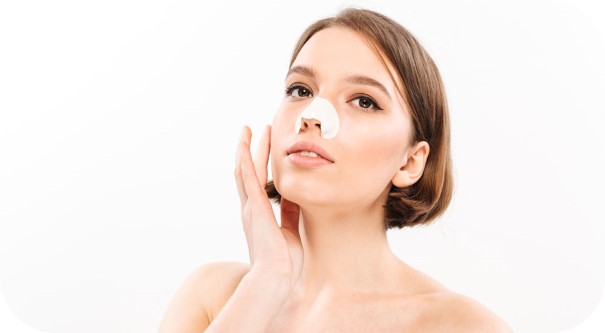









The nose is an extremely important organ that is located in the middle of our face, determines the shape of our face and expression with its appearance, reflects our personality, in addition to its very important functions such as breathing and smelling. Surgical interventions to the nose are either functional (breathing) septoplasty, turbinate surgery, etc.; either for aesthetic (shape and size) rhinoplasty; or both-purpose septorhinoplasty operations. If septorhinoplasty surgery is to be performed, because of the very close anatomical relationship of the internal and external structures and the effect of each intranasal intervention on the external appearance, for a good result and the least complication, “same session, same surgeon”, that is, the whole operation should be performed in the same session and by the same surgeon if possible. ideal to do.

How is Nose Aesthetic Surgery Performed?
Aesthetic nose surgery (rhinoplasty) can be done with an incision made from the partition between the nostrils (columella), or it can be done just inside the nostrils. Rhinoplasty is never a standard operation in which the same procedures are performed in every patient, and both the technique to be used and the procedures to be performed should be determined according to the patient's nose structure, the type and size of the existing deformity. The ideal result should be a natural nose with ideal aesthetic dimensions and lines, which is not excessively curved, the tip of the nose is not excessively pointed and raised.
Post-Surgery Process
The management of rhinoplasty surgery and the post-processing process can vary greatly from physician to physician, and each physician has his or her own style. The process management I applied after rhinoplasty surgery is as follows:
The operation is performed under general anesthesia (fully asleep) and usually takes 1.5-2 hours if septoplasty is not performed, and 2.5-3 hours if septoplasty is to be performed. At the end of the surgery, a plaster or special thermoplastic material splint is placed on the outside of the nose; If septoplasty is performed, additional silicone splints are placed in both air channels. Oily gas buffers used in the past are no longer used. In order to wake up comfortably and smoothly from the anesthesia, the patient is asked to do the following 3 actions: 1. to breathe through his mouth, not to try to breathe through his nose (if there are silicone splints inside); 2. swallowing saliva in his mouth; 3. not to bring his hands to his face (in order not to disturb the splint outside). The patient places these 3 actions in the subconscious before the operation and if he conditions himself, he wakes up very easily after the operation.
The patient stays in the hospital for 1 day after the operation and is discharged after 1 week to come for control. He spends this process in the hospital extremely painless and comfortable with head elevation, intermittent ice application to the eyes and medication. There is never an unbearably severe pain after surgery. Although slight pain may be felt, it is also controlled with ice application and pain relievers. Postoperative ice application is extremely important for both pain control and preventing bruising and edema. For this, the patient should start applying ice as soon as he leaves the surgery and keep the ice pack over his eyes as long as he can stand it. This process continues until 24 hours after the surgery. After 24 hours, the ice will no longer have any effect.
The patient uses painkillers, antibiotics and antihistamines (for edema) during the 1-week period at home. If open rhinoplasty is performed, antibiotic ointment is applied to the suture line under the nose 3 times a day for 1 week. For quick resolution of facial edema, if possible, he should lie on his back with a high pillow for 1 month, he can turn his head to the right and left provided that his nose is in the air. It is forbidden for the patient to lie on his side or prone for 1 month.

After removing the silicone splints, if any, or 24 hours after the operation if not applied, the nose should be washed daily with sea water or physiological saline for 1-4 weeks to be determined by the doctor.
For 1 week after the operation, the patient should not wet the external nasal splint and should not sweat. For this reason, if a bath is to be made, the head should not be wet, but a bath should be taken from the neck down. The patient should come to have the external splint removed on the 7th postoperative day. A few hours before coming, he should have his head washed from the forehead to the nape, paying attention to the splint, by the hairdresser. In the meantime, even if the outer splint gets wet, there is no problem, because it will be removed on the same day.
After the external splint is removed, a paper tape is applied to the nose and remains for 1 week. Paper tape should not be wetted or sweaty just like the outer splint. After 1 week, the paper tape is also removed and the nose becomes completely unwrapped and open.
If a silicone splint is placed in the nose, these splints remain for 1-4 weeks, depending on the patient, and should be removed by the doctor.
All sutures inside and outside the nostrils are self-absorbed within 1-2 weeks, they do not need to be removed.
It is important that the patient does not get traumatized to the nose, especially for 1 month after the surgery. Therefore, if possible, it is recommended not to use public transport too much, not to enter the crowd, not to stand behind the door, not to take small children and pets on their laps.
If the patient uses glasses, they are allowed to wear them after 1 month. Again, not very heavy sports and swimming can be done after 1 month. Heavy sports can be started only after 3 months.
1 month after the operation, massages are started to be applied on the nose by hand, at least 3-4 times a day, for 3-6 months, as the physician will show, in order to quickly resolve the edema in the nose.